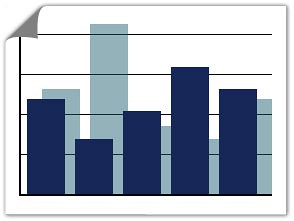 Rail is the cleanest mode of motorized transport, right? That's what we thought, but apparently, it's not always true.
Rail is the cleanest mode of motorized transport, right? That's what we thought, but apparently, it's not always true.We learned of this study from this slightly confusing article posted on Drudge.
In a nutshell, the authors of the study encourage policy makers to move away from measuring energy consumption and pollution via the "tailpipe" approach, which basically means only measuring what comes out the back end of the operating vehicle or plant that produces, say, electricity to run a train.
Instead, the authors suggest taking into account the energy used and pollution caused throughout the entire lifespan of a transportation mode, including, for example, the pollution caused building the plant that makes the cars, producing the actual car, shipping the car, etc.
When taking this approach, the researchers found that deciding the best transportation solutions can vary quite dramatically:
"buses with peak-hour occupancies have the best energy and greenhouse gas performance, followed by rail and air systems, and trailed by automobiles. Air travel is not much worse than rail travel; in some cases even better. Off-peak bus travel is the worst performer. Inventorying criteria air pollutants yields a different ranking of transportation modes. Total life-cycle energy inputs and greenhouse gas emissions increase by 46% for onroad, 121% for rail, and 24% for air systems over vehicle tailpipe operation primarily due to vehicle manufacturing and maintenance, infrastructure construction, and fuel production."
Other news:
No special trains for the 4th. (WTOP)
Suicide roundup (DC Examiner)





















 Oct. 11, 2012
Oct. 11, 2012 February 21, 2012
February 21, 2012 March 4, 2010
March 4, 2010





3 comments:
Here's the original study: http://www.iop.org/EJ/article/1748-9326/4/2/024008/erl9_2_024008.pdf
Best I can make of it, rail only comes out dirtier in a few pollutant categories that result from the use of coal power. In the category that counts for global warming, CO2, rail comes out the clear winner.
The later Metro cars were designed to generate energy into the power rail on breaking. These were called the chopper cars as there is an electronic device that can perform this function. So, if there is another consist moving out up ahead or behind a breaking consist at the same time, it conserves power. The DC system never put in the flywheels next to the tracks so that could store the power even if there was no other movement at that instant.
Lightning
Post a Comment